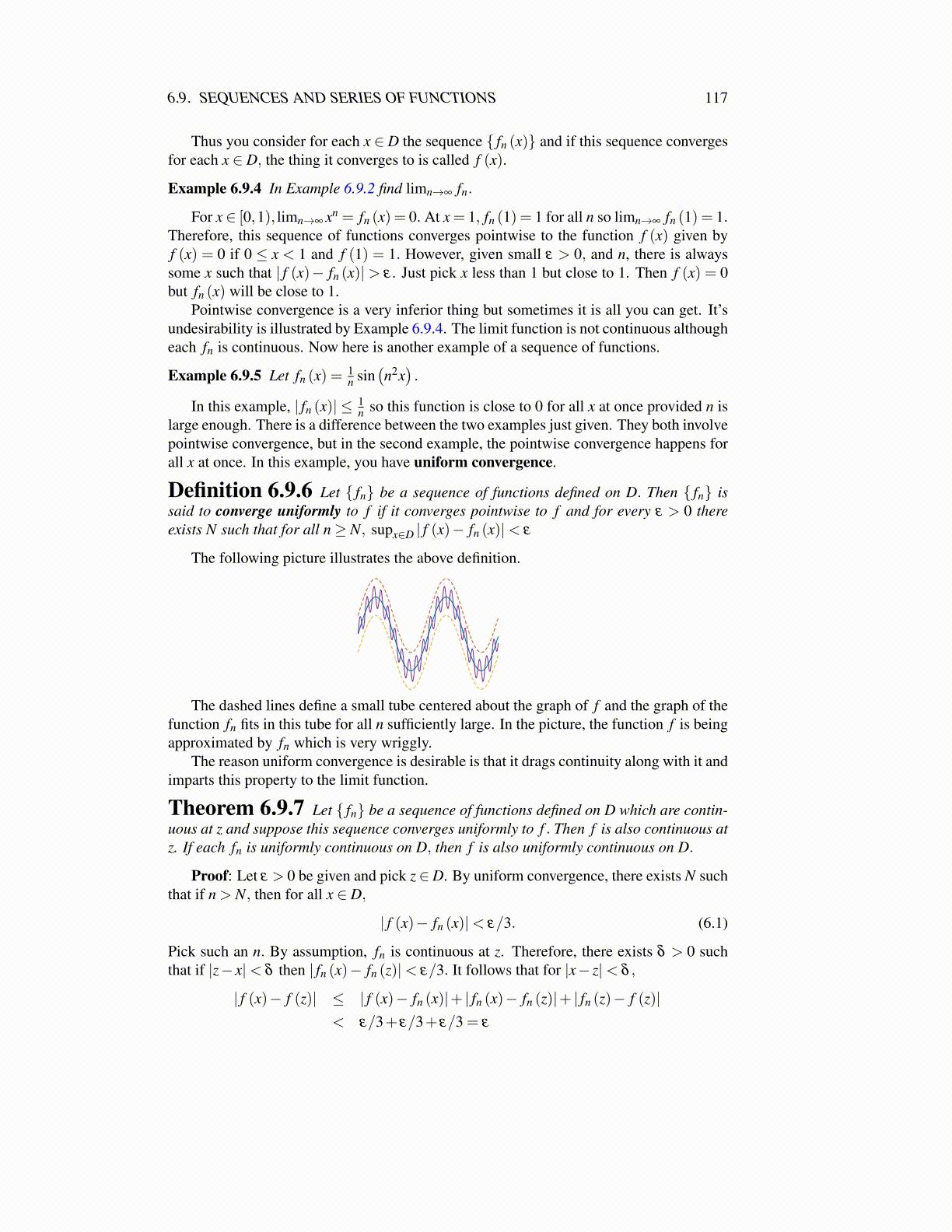
6.9. SEQUENCES AND SERIES OF FUNCTIONS 117
whenever the limit exists. Thus there is a new function denoted by
f (x)≡∞
∑k=1
fk (x) (6.3)
If for all x ∈ D, the limit in 6.2 exists, then 6.3 is said to converge pointwise. ∑∞k=1 fk
is said to converge uniformly on D if the sequence of partial sums, {∑nk=1 fk} converges
uniformly. If the indices for the functions start at some other value than 1, you make theobvious modification to the above definition as was done earlier with series of numbers.
Theorem 6.9.13 Let { fn} be a sequence of functions defined on D. The series∑
∞k=1 fk converges pointwise if and only if for each ε > 0 and x ∈ D, there exists Nε,x
which may depend on x as well as ε such that when q > p≥ Nε,x,∣∣∣∣∣ q
∑k=p
fk (x)
∣∣∣∣∣< ε
The series ∑∞k=1 fk converges uniformly on D if for every ε > 0 there exists Nε such that if
q > p≥ Nε then
supx∈D
∣∣∣∣∣ q
∑k=p
fk (x)
∣∣∣∣∣< ε (6.4)
Proof: The first part follows from Theorem 5.1.7. The second part follows from ob-serving the condition is equivalent to the sequence of partial sums forming a uniformlyCauchy sequence and then by Theorem 6.9.11, these partial sums converge uniformly to afunction which is the definition of ∑
∞k=1 fk.
Is there an easy way to recognize when 6.4 happens? Yes, there is. It is called theWeierstrass M test.
Theorem 6.9.14 Let { fn} be a sequence of functions defined on D. Suppose thereexists Mn such that sup{| fn (x)| : x ∈ D}< Mn and ∑
∞n=1 Mn converges. Then ∑
∞n=1 fn con-
verges uniformly on D.
Proof: Let z ∈ D. Then letting m < n,∣∣∣∣∣ n
∑k=1
fk (z)−m
∑k=1
fk (z)
∣∣∣∣∣≤ n
∑k=m+1
| fk (z)| ≤∞
∑k=m+1
Mk < ε
whenever m is large enough because of the assumption that ∑∞n=1 Mn converges. Therefore,
the sequence of partial sums is uniformly Cauchy on D and therefore, converges uniformlyto ∑
∞k=1 fk on D.
Theorem 6.9.15 If { fn} is a sequence of functions defined on D which are continu-ous at z and ∑
∞k=1 fk converges uniformly, then the function ∑
∞k=1 fk must also be continuous
at z.
Proof: This follows from Theorem 6.9.7 applied to the sequence of partial sums of theabove series which is assumed to converge uniformly to the function ∑
∞k=1 fk.